So, you’ve got an intriguing story idea and you’re picturing some of the scenes in your mind, eager to get them down on paper and begin wowing readers. But unless you ground your readers with deep POV right from the start, you'll have a hard time getting them to care what happens.
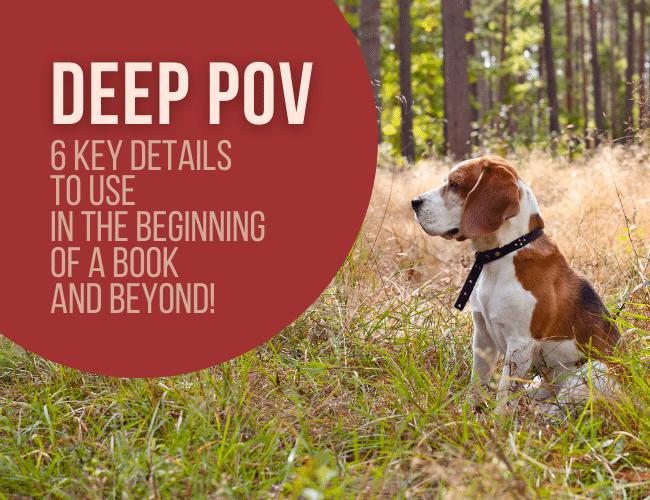
There are specific techniques that master writers use to draw readers in and keep them engaged. In this article, I’ll be teaching you about the first and fundamental—absolutely indispensable—technique that pulls readers in and makes them forget they’re reading.
So get out your notebook and prepare to level up your writer’s toolbox. This will be a game changer!
The Ten-Second Audition
Readers have millions of books to choose from. They don’t waste much time on a book that doesn’t immediately engage their curiosity and get them anticipating future events. We have mere seconds to grab them before they move on.
As if that’s not enough of a challenge to a writer, we have to compete with social media, streaming services, video games, and all sorts of other avenues of entertainment. Ours is a tough job, one that requires discipline, dedication, and a willingness to keep learning and honing our skills.
But if you have a passion to tell a good story and serve your readers, this is a good place for you to be!
Notice how I said, “serve your readers.” I believe that’s what it’s all about. The reader.
It’s important to realize there’s an actual person on the receiving end of your words, that they have real wants and needs. Great writing—the kind that sells—is about creating the sort of quality reading experience that living, breathing person craves.
Often, first time writers think it's all about the story. I was no different. I jumped into creating stories without realizing that the story is just the path to reaching the reader. Writing is about connecting with someone and making a difference, however small or fleeting, in that person's life.
Readers want to escape into a story, to sink beneath the page so they’re no longer just reading—they are immersed in the story. This kind of reading imparts a sense of immediacy and becomes an experience, a satisfying and sustaining way to spend the precious commodity of time.
It’s our job, as fiction writers, to give our readers what they need so they can have what they want, and the essential place to do this is in the opening pages of the book.
Deep POV: Pulling Readers Deep Into the Story
There’s a trio of forces that drive a reader forward through your story—curiosity, surprise, and suspense. I talked about the superpower of each in my last article, What is Suspense? Why and How It Makes Better Books.
But in order for these forces to function as they must, the reader needs to be solidly engaged and grounded in your story. And this has to happen from the very first sentences of your book.
The most powerful technique for achieving this is often called Deep Point of View (Deep POV).
You may be asking, “What is deep point of view?” I think of it as the magic of applied POV. My mentor, Dean Wesley Smith, refers to it as Depth.
He explains Depth as what you do to take your reader deep into the story so that he cannot leave, keeping him away from the surface where he might break out of the story and put the book down.
Writing in deep point of view is accomplished through the use of specific types of details, and the omission of others.
Before we dive into that, there’s a crucial concept I need to drill home, because everything really hinges on understanding this one key aspect.
Your Characters Are Alive
In the context of your story, your characters have a real life, and the reader experiences the story through them. They are the interface. They are what allows your reader to “plug in” to the story and feel the power it generates.
Every word of the story must come through a character’s point of view, whether first person or third person, if you want to pull the reader beyond the page and ground them in the setting of your world. If you allow author intrusion, you risk losing your reader.
In other words, if you—as author—look around and start describing the setting through your own viewpoint, you’ll never pull the reader into the character and story. You must go through your POV character.
This means you have one filter. Your story might have multiple viewpoint characters, may even combine first person POV with third person point of view, like James Patterson does in his Alex Cross novels.
But it's important to stick to one point of view per scene, with clear scene breaks between. Bobbing around from one character’s thoughts to another's doesn’t allow the reader to attach and grow inside the viewpoint character’s head.
Worse, it can be confusing and send a reader speeding away from your book.
While it’s possible to tell a story in this superficial manner, you won’t achieve the depth, the absorption, the commitment from your reader that we’re addressing in this article.
One POV character per scene. One filter. And everything in the story comes to the reader, undiluted, through that single viewpoint and filter, in your character's voice.
When writing, consider the different types of filter words, the details, you’ll need to pull your reader deep and ground them in the story’s setting so they'll want to stay.
There are six types of details that will help you achieve Deep POV.
6 Key Types of Details That Achieve Deep POV
The goal here is to pull your reader deeply and immediately into the story through a connection with your viewpoint character, making it hard to put your book down.
This POV can be a single character for the length of the book, or dual POVs that each share their own viewpoint.
Regardless, these are the specific types of details you'll use in the opening lines of your story and the beginning of each chapter to achieve this deep POV.
1. Character-focused details
Remember, your viewpoint character is alive, a functioning individual with a background of experience. And every word of the story is filtered through that character's experience.
Have you heard of the Rashomon Effect, named after Akira Kurosawa’s 1950 film? It describes how people can witness the same event and give substantially different accounts about what happened. That’s because many of the things people notice are unique to them.
Is your character a professional chauffeur? What kinds of details would a chauffeur notice that others might not? Would he pay particular attention to the makes and models of cars? The state of a vehicle’s tires? Would he notice a suspect’s peculiar tan line from wearing driving gloves in a convertible?
Is your character a baker? What kinds of details would a baker notice that others might not? Would she pay particular attention to the quality of bread served in a restaurant? The state of another character’s kitchen? Would she notice that yeast infection rash on a suspect’s hands that comes from kneading too much dough?
When you get inside a character’s POV and deliver the scene to the reader through that filter, the character—and the story—come alive.
This sucks the reader deep into the story world, and tightly holds them to a new character or group of characters they like.
One Great Strategy for Writing Character-Focused Details
In Voice: The Secret Power of Great Writing, James Scott Bell writes, “You, the author, must identify with the character so closely that you feel what the character feels, think what the character thinks. This is what great actors do.”
When I’m working on character development, I get into that character. I adopt the physiology of the character, meaning I get up and jump around, energize myself, if I’m writing that type of character. Or I slump in my chair, exhausted, if that’s appropriate to my character’s state. I take on their body language.
I might augment this by running through an internal dialogue in my character's voice until I sound like he or she sounds. Or pretend I'm choosing off a menu or dressing for a party as they would. And so on.
This technique comes from theater director Michael Chekhov, and the theory behind it is that our physiology informs our psychology. It helps get me into the same state of mind as my character so I can provide the kind of details peculiar to that individual.
And, of course, I try to think as a chauffeur or a baker would think.
It’s always a smart idea to learn from the masters. I'm defining a master writer as an author who’s consistently produced bestsellers over the last thirty or forty years.
So, let's look at an example from the masters.
The opening paragraph of Michael Connelly’s book The Scarecrow is delivered through the point of view character, Wesley Carver, chief technology officer for a data security firm. Notice the types of details he uses to ground the reader in the setting and inside his own viewpoint:
Carver paced in the control room, watching over the front forty. The towers were spread out before him in perfect neat rows. They hummed quietly and efficiently and even with all he knew, Carver had to marvel at what technology had wrought. So much in so little space. Not a stream but a swift and torrid river of data flowing by him every day. Growing in front of him in tall steel stalks. All he needed to do was to reach in, to look and to choose. It was like panning for gold.
Carver is a computer guy, steeped in data. The details he notices and thinks about relate to the abundance of data and what it can do for him. Like rivers and fields he can harvest and mine for gold. Do you see how these details tell us more about his character and ground us inside his head?
In the opening of your own book, make sure you get firmly inside the head of your viewpoint character and deliver the story to your reader from there. Think about what your character would notice and include fresh, character-focused details that will pull the reader in there beside you.
2. Sensory details
Remember, every piece of information that comes to your reader must pass through your viewpoint character and how do we receive information but through our senses?
Again, this is where “getting into character” is useful. Feel what your character is feeling; see what they see. Hear, taste, and smell what they're experiencing. Whether it's the sticky heat of an Amazon jungle or the shriek of brakes on asphalt, pass it on to your reader.
It’s a good idea to use at least four of the five senses in every depth opening during the first third of your book. But another sensory technique you can use to convey a feeling of being overwhelmed is to focus lavishly on one sense.
For example, if your character is assaulted by noise:
The cacophony rose higher, coming in shrieks and great whorls of sound that swelled in a distorted symphony, wracking Joanie’s eardrums. When she thought she could bear no more, a loud maniacal laughter joined the riotous stew, and then a new sound, strange and frightening above all else. It was her own scream.
Or, your character may be plunged into absolute darkness:
Inky black pressed against Paul’s eyelids like coins on a dead man’s face, drenching him in its clutching grasp. The darkness was thick as tar, sticky, smothering him, working gloom-clawed fingers into his mouth, his ears, his nostrils, until he was drowning in it.
Using details that involve the five senses is key to pulling your readers beneath the surface of your book and keeping them immersed—in a good way.
Let’s go to some examples from the masters. Here’s the opening of James Lee Burke’s story Big Midnight Special:
You know how summertime is down South. It comes to you in the smell of watermelons and distant rain and the smell of cotton poison and schools of catfish that have gotten dammed up in a pond that’s about to be drained. It comes to you in a lick of wet light on razor wire at sunup. You try to hold on to the coolness of the night, but by noon you’ll be standing inside your own shadow, hoeing out long rows of soybeans, a gunbull on horseback gazing at you from behind his shades in the turnaround, his silhouette a black cutout against the sun.
Do you see how Burke made his readers smell the watermelon, rain, and fish? See the light and shadow? Feel the searing heat? Did you catch how these details pull us right into the viewpoint character and the setting? Reading this, you know he's a prisoner on work duty in the fields without being spoonfed the information in a boring backstory info dump. Genius.
Don’t neglect to use thick, rich sensory detail to open your story and pull your reader deep.
3. Specific details
This is where we talk about something my mentor calls a fake detail. You need to understand that the words you write are symbols that represent ideas for the reader. You produce these symbols and the reader interprets them.
If you want the reader to stay immersed in your story, you need to be in control of what you communicate.
That means using specific details that communicate clear pictures and ideas to the reader. We can never transport the story in our heads in undistorted and perfect form into a reader’s head, but we need to come as close to that ideal as we can or risk bumping the reader to the surface.
Here’s what I mean.
Let’s say in your story you mention a dog.
Dog is a very general term, and if the dog is unimportant to the story and won’t be mentioned again, you can probably get away with letting your readers conjure up any kind of dog they like.
But if the dog is to play a role, or in any way re-enter the story, you’ve just put yourself in a dangerous position by using such an unspecific term.
Here’s why: the reader takes the coded symbols you’ve given him and formulates a picture in his mind of what’s going on in the story. You wrote that a dog was running along the street, so he imagines his favorite kind of dog, a Great Dane, loping in great strides.
Your reader is grounded in the setting and things are flowing along smoothly until your story tells how the beagle stopped running and started barking, a whiny, high-pitched yipping sound. And—Bam!—you’ve popped your reader to the surface.
Your coded words don’t match the picture in his head, reminding him it’s just a story, only words on paper, and he might as well put the book down and go to sleep.
Wherever feasible, use specific details. And keep these two rules in mind:
- Specify up front. If you had initially identified the dog as a beagle, your reader would have formulated that picture from the start and wouldn’t have been yanked from the story when the dog started in with its beagle bark. Later, you can just say “dog” because the image of a beagle has already been imprinted.
- If you’re going to describe something, don’t name it until after you’ve described it. If you name it first, the reader gets an image in her head and when your description doesn’t meet up with her idea, it jangles and can encourage her to surface out of your story.
You never want to do anything that sends a reader to the surface and away from your story.
4. Opinionated details
Your character was not born on page one. Remember, they have a history of life experience which has given them, among other things, opinions. Their opinion should color everything they pass on to the reader, like a hot key combo into their personality.
Those opinions animate your character, making them real, and this helps pull the reader down beneath the surface of your story. Their opinions also make them distinct from other characters in the book, allowing them to stand out and be a three-dimensional individual.
Characters are revealed by their behavior and their interactions with others. By making sure your character’s attitudes and opinions come through to the reader, you’ll ensure a deeper, more satisfying reading experience.
Elizabeth George demonstrates this well in the opening of her book With No One As Witness. She delivers a paragraph packed with opinionated details perfectly suited to her character, giving us a vivid picture:
Kimmo Thorne liked Dietrich best of all: the hair, the legs, the cigarette holder, the top hat and tails. She was what he called the Whole Blooming Package, and as far as he was concerned, she was second to none. Oh, he could do Garland if pressed. Minnelli was simple, and he was definitely getting better with Streisand. But given his choice—and he was generally given it, wasn’t he?—he went with Dietrich. Sultry Marlene. His number one girl. She could sing the crumbs out of a toaster, could Marlene, make no bloody mistake about it.
These details, dripping with opinion, pull us immediately into Kimmo Thorne's head. We know what he likes and how he feels about it. He loves impersonating female vocal stars and Marlene Dietrich is his favorite. Once we're inside his head, we're grounded in the setting and ready to experience the rest of the scene through his perceptions.
When you express your viewpoint character's opinions, you bring your characters alive and readers deeper into your story world, ready to follow on as the story progresses.
5. Emotional details
Using details that convey your character’s emotion is another key way to pull the reader below the surface and get her actively involved in your story, feeling some of what your character is feeling.
Because your reader is a real and individual entity with life experiences of their own, the emotions of your character will stir your reader’s own emotional embers to evoke authentic, personalized feelings.
What a powerful way to draw the reader deep into your story world and get them invested in what happens to your character.
Focus on describing what it feels like to the character to be angry or hurt or deliriously happy, rather than naming the emotion outright. Show, don't tell.
What physical reactions are taking place? How do they cope with them? What kind of memories or insecurities do they evoke? Emotions, like opinions, will color the details you choose to include.
For example, here's the opening of Dean Koontz’s book Sole Survivor:
At two-thirty Saturday morning, in Los Angeles, Joe Carpenter woke, clutching a pillow to this chest, calling his lost wife’s name in the darkness. The anguished and haunted quality of his own voice had shaken him from sleep. Dreams fell from him not all at once but in trembling veils, as attic dust falls off rafters when a house rolls with an earthquake.
When he realized that he did not have Michelle in his arms, he held fast to the pillow anyway. He had come out of the dream with the scent of her hair. Now he was afraid that any movement he made would cause that memory to fade and leave him with only the sour smell of his night sweat.
Notice how Koontz describes the effects of the man’s emotions, rather than labeling them as grief and longing. Did you also happen to notice how Koontz included the character-focused details of a native Californian? And sensory details including sight, sound, touch, and smell?
All in the first two paragraphs of the book.
Including emotional detail creates intimacy and draws a reader inside a character, inspiring empathy. It can also spark an answering emotion within your reader, reaching someplace deep inside and generating a genuine emotional response.
Let’s examine one more type of detail that helps create the depth you need to capture your readers and sink them deep into your story.
6. Consistent detail
Remember, your words are like code to the reader that they decipher to form a picture in their mind, allowing them to join in the story almost as if experiencing it themselves. When this happens, they won’t put the book down unless absolutely necessary, and they'll come back to it as soon as possible.
Unless you pop them out of the story by some inconsistency.
We discussed head hopping and fake details already, but your reader can also be jarred out of the story if you throw in a detail that clashes with the rest of the image you're establishing.
Like a well-decorated house, your details can be eclectic and fresh, but they should work together to form a consistent flow and fabric for your story.
Stephen King illustrates this well in the beginning of his novel The Stand:
Hapscomb’s Texaco sat on US 93 just north of Arnette, a pissant four-street burg about 110 miles from Houston. Tonight the regulars were there, sitting by the cash register, drinking beer, talking idly, watching the bugs fly into the big lighted sign.
It was Bill Hapscomb’s station, so the others deferred to him even though he was a pure fool. They would have expected the same deferral if they had been gathered together in one of their business establishments. Except they had none. In Arnette, it was hard times. In 1970 the town had had two industries, a factory that made paper products (for picnics and barbecues, mostly), and a plant that made electronic calculators. Now the paper factory was shut down and the calculator plant was ailing—they could make them a lot cheaper in Taiwan, it turned out, just like those little portable TVs and transistor radios.
Norman Bruett and Tommy Wannamaker, who had both worked in the paper factory, were on relief, having run out of unemployment some time ago. Henry Carmichael and Stu Redman both worked at the calculator plant but rarely got more than thirty hours a week. Victor Palfrey was retired and smoked stinking home-rolled cigarettes, which were all he could afford.
Do you see how the underlined details work together to create a sharp and consistent image of the perishing town? I especially like the bugs flying into the big lighted sign as a metaphor for the death that awaits them all. It suggests everyone present in the scene is just waiting for the zap that will dispatch them to the big light in the sky.
When you use consistent details throughout a scene, each one adds a layer to the fabric of your story, strengthening it while adding something fresh, drawing your reader ever deeper into your story world.
While all six types of details will help you ground your reader into your story with Deep POV, there are also a few more writing tips about detail you should know if you're to hone your writing style and polish a great story.
Can You Give Too Much Detail?
When I first started writing, I subscribed to the idea that the story should be cut down to the bone, spare and lean, uncluttered by too much detail. I had great plots (or so I imagined), but I didn’t always put much flesh on those bones.
As I learned and grew as a writer, I discovered how vital it is to add color and substance through detail, that a story is more than a series of brilliant plot points.
I remember taking one of the Great Courses, Building Great Sentences: Exploring the Writer’s Craft. The professor advocated for lush, long sentences, using what felt to me like a shocking amount of detail, but I began to see how detail can clarify and enliven rather than clutter and obscure.
If you use the right kinds of details in the right way. As I’ve described in this article—through the point of view character. And there’s nowhere in your story more important to establish this richness and depth than in the scene and chapter openings of the first third of your book. This is what it takes to root a reader in your story.
As the book progresses into the later stages and the pace increases, you won’t need as much detail to hold your reader down in the story. Provided you’ve done the work to pull them down in the first place.
If you haven’t, you won’t need to worry about the level of detail in the later stages because your reader isn’t likely to make it that far.
Can You Open With Action?
You might think the most exciting stories start with a big bang of action, but if you go back and analyze the work of master writers—those who’ve consistently turned out bestsellers for a decade or more—you’ll see that the author quickly grounded the reader with sensory detail, opinion, and emotion either before the action began or as the action unfolded.
Here’s an example from the first sentences of Jeffery Deaver’s book The Twelfth Card:
His face wet with sweat and with tears, the man runs for freedom, he runs for his life.
“There! There he goes!”
The former slave does not know exactly where the voice comes from. Behind him? To the right or left? From atop one of the decrepit tenements lining the filthy cobblestoned streets here?
Amid July air hot and thick as liquid paraffin, the lean man leaps over a pile of horse dung. The street sweepers don’t come here, to this part of the city. Charles Singleton pauses beside a pallet stacked high with barrels, trying to catch his breath.
See how Deaver wove sensory, emotional, and character-focused detail into these few sentences to start pulling the reader into the setting? In subsequent paragraphs, he thickened the use of detail to finish the job.
If you're worried your opening will drag without immediate action, make sure you're using vivid language and active voice rather than passive voice. And deliver every word through your viewpoint character, pulling your readers into the setting and showing it to them through the fresh eyes of your character.
Open your story with 300 to 400 words of depth, expressed through the viewpoint character in the types of details we’ve discussed, before moving forward into plot points and action. If the reader has no interface with the story, no way to “plug in” via details delivered through the viewpoint character, they won’t care what happens and you’ll lose them.
Make the connection with the reader first, then introduce action and plot.
A Better Foundation Pulls Your Reader Into the Story
Whether you're starting your first novel or your fifty-ninth, building a firm foundation so your reader can experience and enjoy your story is imperative. If you missed it in your first draft, make this your number one job in revision.
In this series so far, we’ve discussed the elements of suspense and how suspense is a driving force in any type of story. We’ve discussed what suspense is and how it works in tandem with curiosity and surprise to keep a reader moving forward through a story.
In this article, we’ve discussed the types of details you need to pull your reader beneath the surface of your story so they won’t put your book down.
But there’s another piece of the foundation you must build in order for your reader to invest in the story and keep turning pages to the end.
That missing piece is making sure your reader cares about your main character.
We’ll cover some powerful ways to accomplish this in the next article, so stay tuned!
How about you? Do you see how using these specific types of details draws a reader into a story? Tell us about it in the comments.
PRACTICE
Today, take your story idea and write the first 300 to 400 words of your opening scene for fifteen minutes, using the types of details outlined in the article: character-focused, sensory, specific, opinionated, emotional, and consistent.
Remember, every word of the story should come through your viewpoint character, colored by their opinions and emotions, delivered through their senses. The aim of this exercise is to ground your reader in the setting and viewpoint before rushing into action and plot points, so make sure to focus on that goal.
Don't have a story idea? Head back to the beginning of this series and create an idea for your own suspense novel. Or, practice now with this one:
A chef from New York City has moved to a small town in Oklahoma to take over a failing diner.
When you’re finished writing, post your paragraphs in the Pro Practice Workshop here (and if you’re not a member yet, you can join here), and be sure to provide feedback for your fellow writers!
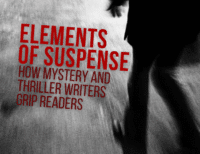
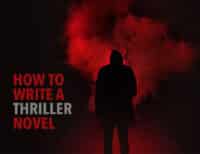
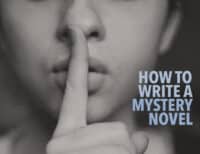
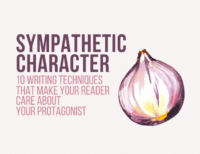



0 Comments
Trackbacks/Pingbacks